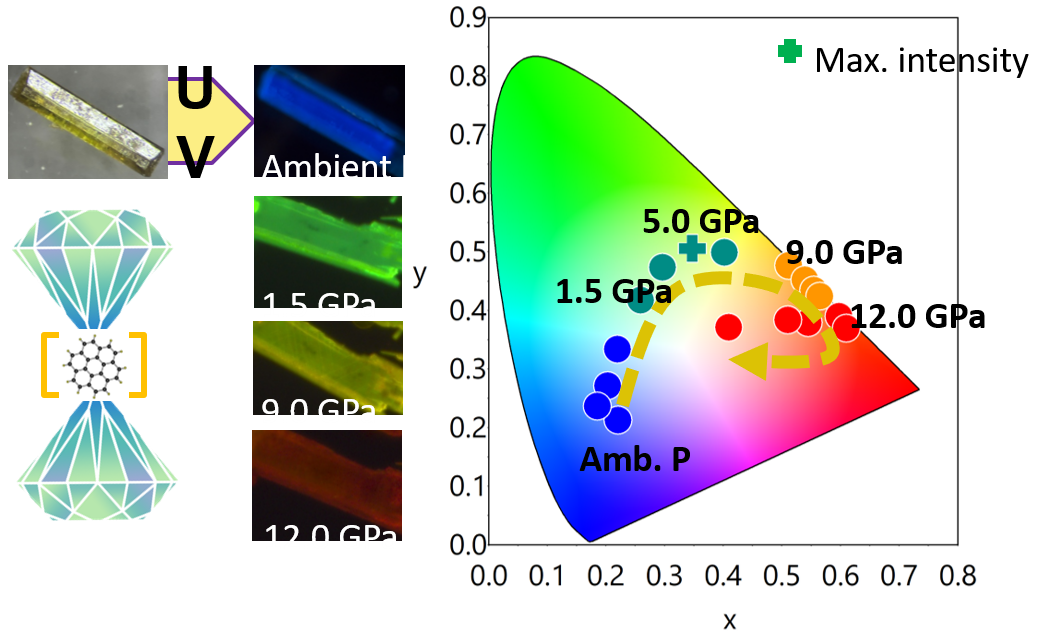High-pressure techniques have long been recognized for their ability to reveal the intricate connections between crystal structures and material properties. This is especially true for van der Waals (vdW) organic molecules. A groundbreaking study led by Drs. Takeshi Nakagawa and Yang Ding from at the Center for High Pressure Science and Technology Advanced Research (HPSTAR) has, for the first time, demonstrated full-color piezochromic emission by manipulating the molecular packing of coronene, C24H12, under high pressure. Their findings have been published as an article entitled "Full-Color Luminescence from Single-Component Hydrocarbon Crystal: RGB Emission by Altering Molecular Packing Under Pressure," and is featured as front cover article in the latest issue of Advanced Optical Materials.

Caption: Photoluminescent micrographs of coronene single-crystals and CIE color coordinates.
Carbon-rich organic molecular luminescent solids, such as polycyclic aromatic hydrocarbons (PAHs), are drawing significant attention for their unique photophysical properties that stem from their highly π-conjugated structures. Unlike their inorganic counterparts, vdW organic molecules offer unprecedented molecular-level tunability of optoelectronic characteristics.
The most notable discovery from this study is a coronene single-crystal that can achieve full-color luminescence simply by altering its molecular packing through the application of pressure. At ambient conditions, coronene nano-rod crystals display blue emission under UV light; this emission can be shifted to green and then red by incrementally increasing pressure. Intriguingly, the team observed that each color change is accompanied by a distinct crystallographic symmetry transition—P21/n for blue, P2/m for green, Pmmm for red, and P2 for no emission. Dr. Martina Vrankić from Ruđer Bošković Institute remarked “The extraordinary tunability and stability of coronene's crystal structure allow for significant chromatic alterations in their emission.”
Although piezochromic luminescence is not uncommon in various organic materials, coronene stands out as the first single-component molecular crystal capable of full-color piezochromic emission. The researchers also found that the emission intensity doubled during compression, leading to intense green emission.
"High-pressure conditions have unveiled astonishing photophysical properties of coronene that remained hidden at ambient conditions," remarked Dr. Takeshi Nakagawa. "The challenge now shifts to the field of Chemistry to realize these phenomena under standard conditions."
